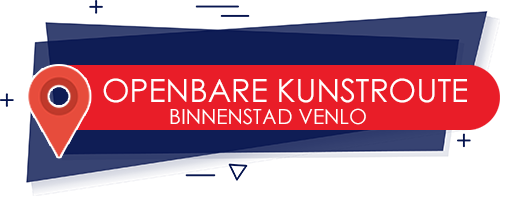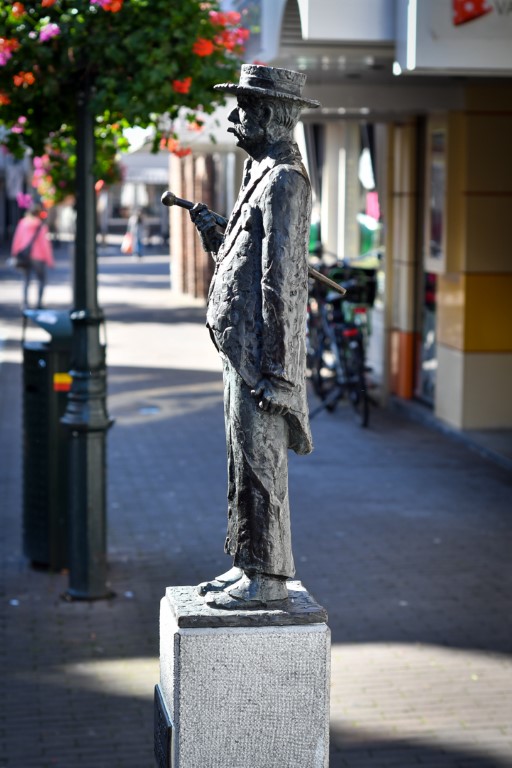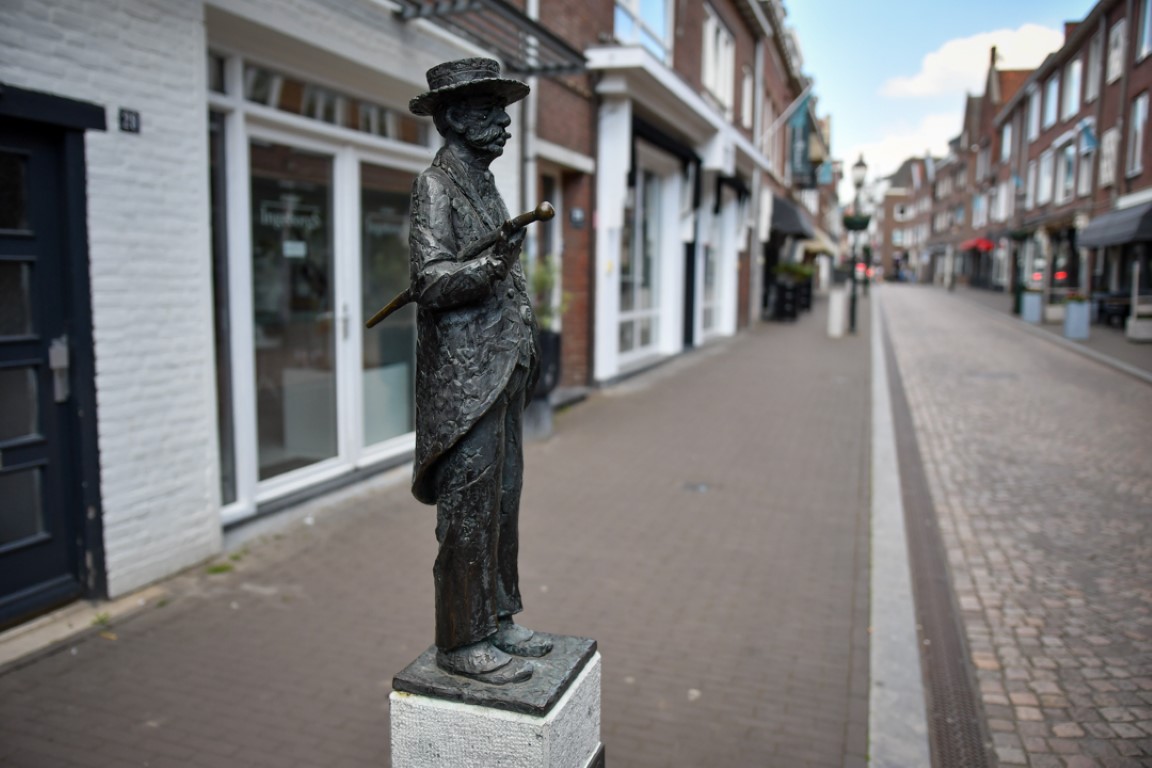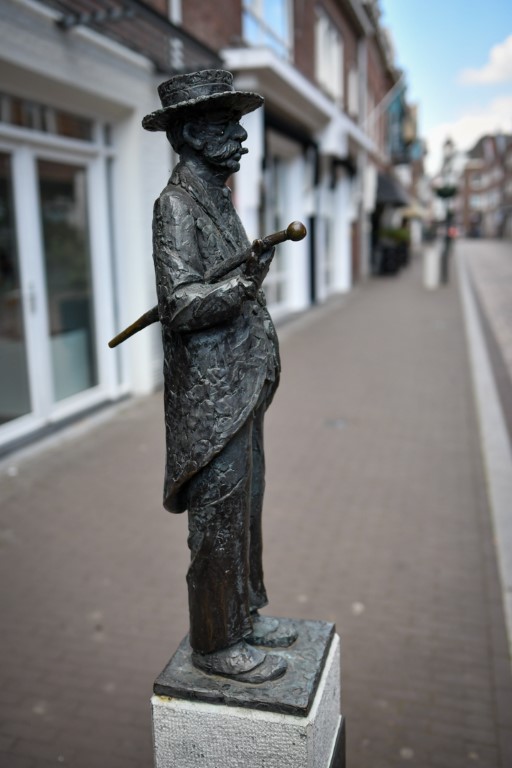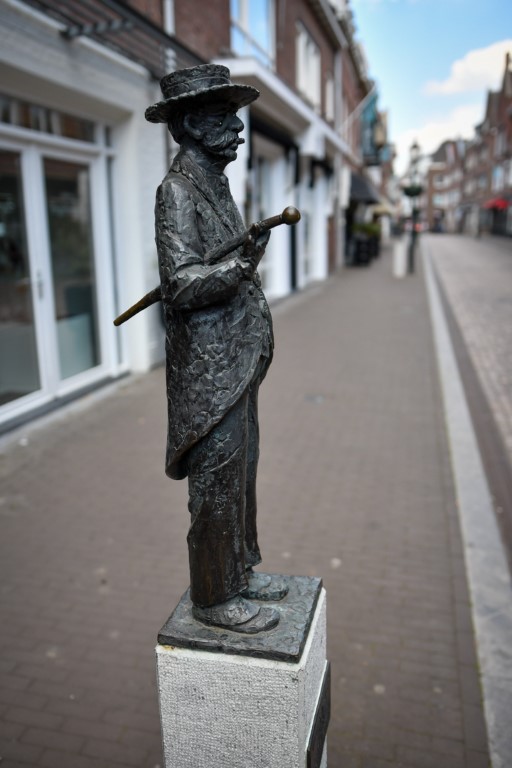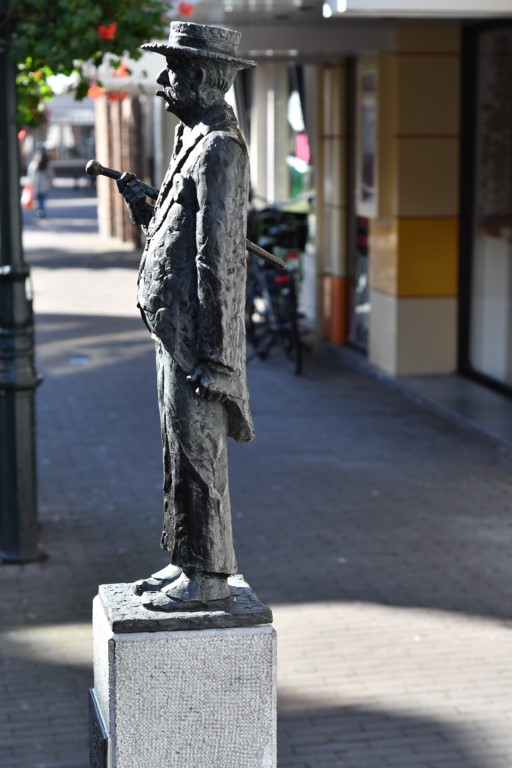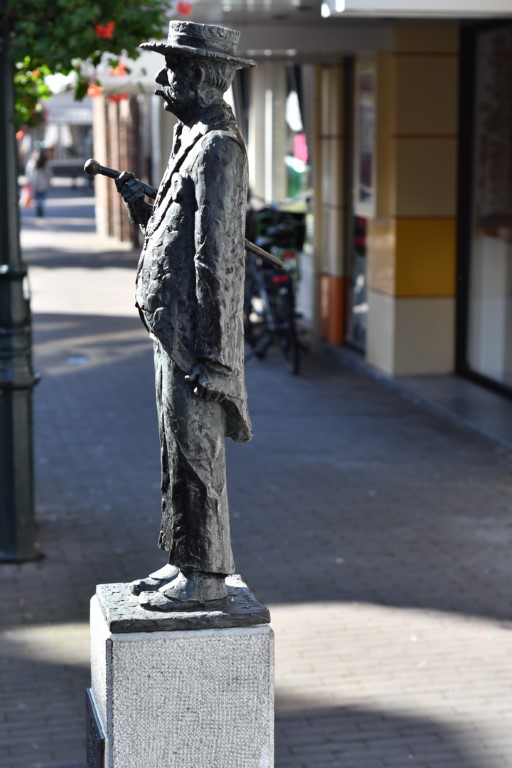Baer De Woers
Statue street Jodenstraat
Baer de Woers (Lambert Francken) – Hay Mansvelders
Baer de Woers is the Venlo nickname of Lambert Francken (1843-1916). Although the origin of this nickname is not entirely clear. The first name of this famous person is: Lambert is Lambaer in Limburg.
Woers probably comes from sausage, which Francken was apparently fond of. In his house, he had a lot of sausage hanging on ropes, to prevent rats from nibbling at them.
In his youth he lived at 55 Kolenstraat, later at 5 Hetje. Hetje was also the name of the working-class neighbourhood that started behind Jodenstraat and ran southwards around the harbour area.
Francken was a worker at the municipal works and manager of the municipal rubble yard. For this job, he was always dressed in simple working clothes. Once in a while he would dream of a better life and would dress up: high black shoes, white trousers, white shirt, tie, waistcoat with watch chain, long black coat with handkerchief and straw hat. To give it all some extra cachet, he would throw in a few French phrases such as ‘Luuk, Anvers-Paris’ and ‘La Belgique a bonheur, nondeju! Especially when he was offered a ‘faroo’ (a drink). Francken is known to have loved these drinks; every now and then he was admitted to an institution for drunks in Lommel.
The artist: Hay Mansvelders
Hay Mansvelders (Venlo, 1935) is a self-taught artist. At a young age, he started working at the Beeldenfabriek St. Joseph, a manufacturer of religious sculptures. He became proficient in the craft and developed an extensive knowledge of classical imagery and its symbolism. He also took private lessons for several years from Limburg artists such as Sef Moonen and René Wong.
In the 1960s, Mansvelders was co-founder of the Venlo Free Academy, a centre for artistic training; as a (staff) teacher he focused mainly on the artistic development of young people. It was his main drive to show young people the beautiful side of cultural self-expression.
“Culture has the abbilitiy to change people”, according to Mandvelders. And he still has that view: art should be available to everyone, no exceptions. After all, it was his own experience that creative expression leads to building up self-confidence.
In the 1980s, Mansvelders became director of the North Limburg Free Academy. When he had to spend more time in an office and meeting structure and had less and less time for his own work, he established himself as a ‘visual designer’, a name he came up with himself and which he has kept ever since. He did not see himself as an artist, ‘out of respect for the real thing’, he regularly stated.
Various of his sculptures can still be found in public spaces in his home town Venlo, such as Valuas and Guntrud, the founders of Venlo, near the Limburgs Museum and the Jocushaan near the town hall. The basis for Hays’s artistry is and remains his fascination for everything that grows and blooms; animals, plants and people. He developed his own visual language, recognisable by the balanced line between figuration and abstraction.
The Jodenstraat (the Jews’ street)
The Jodenstraat is located in one of the oldest parts of Venlo’s city centre. Traces from Roman times have been found here, dating back to the first century AD. According to the legend about the origins of Venlo, Valuas or Flujas, chieftain of the Bructeren, founded a castle called the Vrijburg near the Jodenstraat and Oude Markt in or around the year 96. The name of the street refers to the presence of Jews, who had already settled in Venlo in the 14th century.
For centuries, there used to be monastery on the corner of Jodenstraat and Heilige Geeststraat.
Unfortunately, you will not find a lot of the old buildings; the area was almost completely destroyed during the bombing raids at the end of 1944, which were intended to destroy Venlo’s city bridge in order to stop the Germans.
Only the Romer House from 1490 was saved and preserved. It is a patrician house built in the late Gothic style. Behind the Romerhuis and the present Jodenstraat (Jews’ Street) and in southern direction around the harbour area, there was a working-class neighbourhood called ‘t Hetje. Nowadays, this would be called a deprived area, with prostitution and much alcohol abuse. Many inhabitants of ‘t Hetje worked in the harbour. The neighbourhood consisted largely of slum dwellings and was therefore cleaned up just before the Second World War. The air raids at the end of 1944 did the rest.
One of the most famous shops in Venlo, Versierhoes van der Veer, is located in the Jodenstraat.
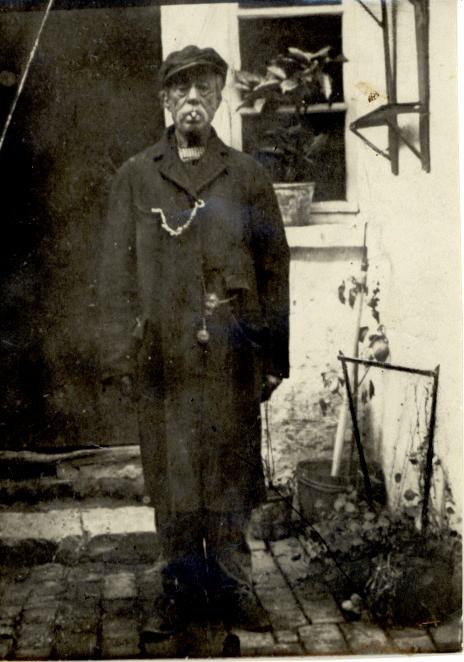
Lambert Francken – Baer de Woers (Photo: Venlo municipal archive)
